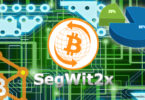In New York state, neighbors are testing their ability to sell solar energy to one another using blockchain technology. In Austria, the country’s largest utility conglomerate, Wien Energie, is taking part in a blockchain trial focused on energy trading with two other utilities. Meanwhile in Germany, the power company Innogy is running a pilot to see if blockchain technology can authenticate and manage the billing process for autonomous electric-vehicle charging stations.
Blockchain has grabbed the attention of the heavily regulated power industry as it braces for an energy revolution in which both utilities and consumers will produce and sell electricity. Blockchain could offer a reliable, low-cost way for financial or operational transactions to be recorded and validated across a distributed network with no central point of authority. As in the financial services industry, this capability has prompted some people to explore whether blockchain may one day replace a portion of utilities’ businesses by doing away with the need for intermediaries altogether. But that view is too extreme and simplistic.
What is more likely to happen is that blockchain will become part of the answer to updating and improving centralized, legacy systems with a distributed hybrid system made up of a patchwork of both large power plants and microgrids powered by distributed energy resources such as solar power. Such a decentralized energy system would be capable of delivering efficient, reliable, and, in many cases, renewable energy.
This coming shift is prompting the industry to focus on blockchain’s potential to make peer-to-peer energy trading a reality, though it’s unclear how soon the nascent technology can be scalable. For example, in a blockchain microgrid project in Brooklyn, N.Y., each participant trading electricity had to invest in a computer with a blockchain “node” in order for their homes with solar panels to be able to sell power to neighbors. The blockchain network manages and records the transactions with little human interaction. The “nodes” in the computers are needed to validate and share the information to minimize the possibility of downtime or interference with the data. The more data that needs to be bundled into “blocks” and passed along, the more computing power they need.
But it’s possible that blockchain may one day enable the development of an integrated trading system that would permit businesses to trade their option to use electricity during a given time frame. For example, a factory could sell five minutes of unused power during a down time to a different factory that needs the additional power. Trading grid flexibility in this way could provide large efficiency benefits for grid operators.
Another area where blockchain could take hold is in enabling customers to switch power suppliers more quickly. Companies are conducting pilots to explore blockchain’s potential to make existing processes, such as meter registration, more efficient and less costly. British startup Electron is developing a blockchain platform that could allow British customers to switch power suppliers reliably within a day without having to rely on the Data Communications Company, the UK’s centralized meter data agency, where a switchover can take much longer.
Finally, blockchain may make existing electric industry processes more efficient by serving as the backbone for utilities’ “smart grid” management systems that automatically diagnose network emergencies and problems and reconfigure in reaction to them. Austrian startup Grid Singularity is using blockchain technology to develop a decentralized energy exchange platform that can host applications ranging from validating electricity trades to monitoring grid equipment, in part because such a platform has the potential to prolong the life of equipment, improving both large and small power-generation system operators’ earnings.
To be sure, as with any new technology, blockchain remains largely unproven, and significant barriers remain. Use cases will need to be more highly developed to convince government-backed programs and regulators that there will not be multiple program delays and possible cost overruns if they agree to adopt the new technology. Common industry standards will also need to be established.
Nevertheless, if it proves reliable and scalable, blockchain technology may ultimately accelerate the transition to what the energy industry calls a “distributed world” made up of both large and smaller power-generation systems for homes, businesses, and communities. To succeed in maximizing the potential of distributed generation and managing less predictable and more volatile renewable power sources, the industry’s infrastructure first must become nimbler and less centralized.
So while blockchain may at first appear to be a form of technological disruption that the power industry should avoid, it could prove to be exactly what is required to keep up with evolving demand for electricity in smaller, lower value blocks and at higher frequency. While there’s always room for startups to move in and disrupt this industry, established utilities are best placed to evaluate and make strategic bets on blockchain technology’s potential applications. If they can seize the moment, centralized incumbents may turn out to be the true disruptors, ushering in a new era of decentralized power.
Source: https://hbr.org/2017/03/how-utilities-are-using-blockchain-to-modernize-the-grid







